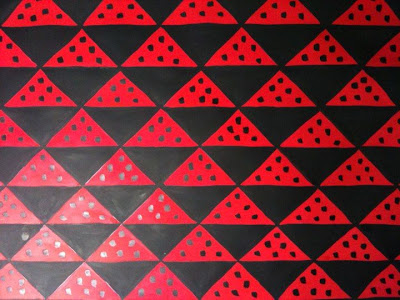Tessellation is the process of creating a two-dimensional plane using the repetition of a geometric shape with no overlaps and no gaps. Generalizations to higher dimensions are also possible. Tessellations frequently appeared in the art of M. C. Escher, who was inspired by studying theMoorish use of symmetry in the Alhambra tiles during a visit in 1922. Tessellations are seen throughout art history, from ancient architecture to modern art.
In Latin, tessella is a small cubical piece of clay, stone or glass used to make mosaics. The word "tessella" means "small square". It corresponds with the everyday term tiling which refers to applications of tessellations, often made of glazed clay.
Examples of tessellations in the real world include honeycombs and pavement tilings.
A regular tessellation is a highly symmetric pattern made up of congruent regular polygons. There are only three regular tessellations: those made up of equilateral triangles, squares, or hexagons.
A semi-regular tessellation uses a variety of regular polygons, of which there are eight. The arrangement of polygons at every vertex point is identical. An edge-to-edge tessellation is even less regular: the only requirement is that adjacent tiles only share full sides, i.e., no tile shares a partial side with any other tile. Other types of tessellations exist, depending on types of figures and types of pattern. There are regular versus irregular, periodic versus nonperiodic, symmetric versus asymmetric, and fractal tessellations, as well as other classifications.
The first comes in my mind when I heard TESSELLATION was - batik . :O HAHAHHA yes, it looks like batik.
Here my version of tessellation :D
- CONTINUITY - ELEVATOR -
- CLOSURE - FRUITS - APPLE
- FIGURE GROUND - BODY -
- ALIGNMENT - BUFFALOS-
- SIMILARITY - TASTY -
WATERMELON








No comments:
Post a Comment